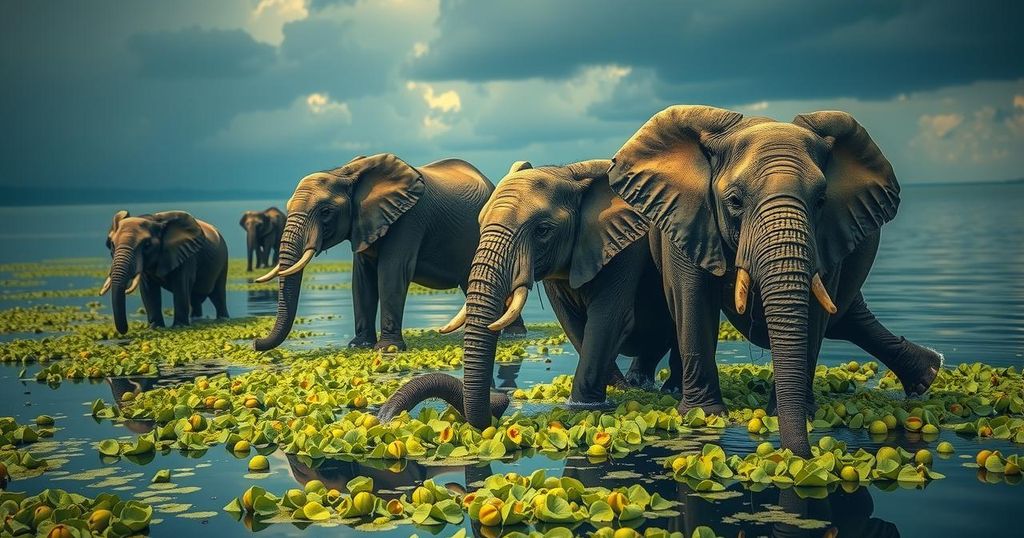Climate Change and Toxic Algae: A Catalyst for Africa’s Elephant Crisis

Recent satellite data analysis reveals that climate change-induced toxic algae blooms led to the deaths of 350 elephants in Botswana’s Okavango Delta in 2020. A transition from extreme drought to heavy rain created optimal conditions for algal blooms, which significantly contributed to the unprecedented mortality of these elephants. The study emphasizes the need for rigorous monitoring to mitigate future wildlife threats due to climate change.
The alarming die-off of 350 elephants in Botswana’s Okavango Delta in 2020 has been attributed to a series of extreme climatic changes and the proliferation of toxic algal blooms. Research from King’s College London reveals that a drastic shift from drought in 2019 to heavy rainfall in 2020 created conditions conducive to these blooms in local watering holes, which elephants frequent for hydration. The study highlights the critical link between climate variations and wildlife mortality, urging for enhanced surveillance of water quality as a proactive measure against such catastrophic events in the future.
The investigation into the elephant deaths in Botswana provides insight into how climate change can adversely affect ecosystems. Botswana is home to a significant population of the African elephant, and the Okavango Delta is known for its biodiversity. This study emphasizes the consequences of climate extremes—specifically, how a transition from drought to heavy rains can disrupt ecological balances and lead to unexpected wildlife crises, underscoring the need for continued environmental monitoring.
The findings of this study underscore the necessity for immediate and ongoing monitoring of environmental conditions affecting wildlife. As climate change continues to pose threats to ecosystems, understanding the relationships between weather patterns, water quality, and animal health is critical for the protection of vulnerable species like the African elephant. This research serves as an urgent call for preventive measures to safeguard wildlife from the detrimental effects of climate change.
Original Source: scienceblog.com






